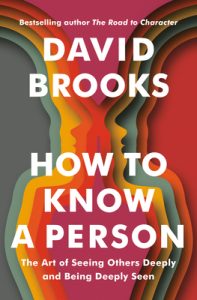
Jay Shetty’s Think Like a Monk: Train Your Mind for Peace and Purpose Every Day is one of those books that sits at the intersection of philosophy and practicality. With over 83,000 ratings on Goodreads and millions of fans around the world, Shetty’s voice as a former monk turned modern influencer has found a massive audience. But does his book live up to the hype? The answer depends on what you are looking for.
At its core, Think Like a Monk is an accessible guide to mindfulness, self-awareness, and purpose. Drawing on his three years living as a monk in India, Shetty translates spiritual concepts from the Hindu and Buddhist traditions into actionable lessons for modern readers. His goal is clear: to help people escape distraction, comparison, and negativity so they can live with intention.
The book is divided into three main sections Let Go, Grow, and Give which mirror the journey from self-purification to self-realization. Along the way, Shetty explores themes such as overthinking, ego, fear, gratitude, and service. He often compares what he calls the “monkey mind” and the “monk mind”:
Monkey mind: Overwhelmed by multiple branches.
Monk mind: Focused on the root of the issue.
Monkey mind: Overthinks and procrastinates.
Monk mind: Analyzes and articulates.
Monkey mind: Looks for pleasure.
Monk mind: Looks for meaning.
These contrasts capture the book’s main message: peace is a matter of training the mind, not changing your circumstances.
One of the strengths of Think Like a Monk lies in how Shetty uses stories and metaphors to make ancient ideas tangible. His reflection that “location has energy; time has memory” beautifully explains why consistency and environment shape our habits. His warning against “revenge bodies” after breakups reminds readers that self-improvement tied to external validation is never fulfilling. And his discussion of pranayama the yogic art of breathing connects ancient meditation practices to modern scientific research on cardiovascular health and stress reduction.
Still, not every reader will find Shetty’s approach satisfying. Some may feel, as reviewer Dr. Appu Sasidharan noted, that parts of the book lack depth especially the transition from his monk life to his return to London, which feels glossed over. Others, like Beauregard Bottomley, found the book unoriginal, echoing timeless lessons already explored more profoundly in classical works such as Aristotle’s Ethics or Boethius’s The Consolation of Philosophy. If you are already well-versed in spiritual or philosophical writing, you may find Think Like a Monk too simplistic.
However, for readers new to self-development or seeking a modern entry point into ancient wisdom, Shetty’s book offers genuine value. His writing is clear and warm, often punctuated with memorable lines like:
“Salt is so humble that when something goes wrong, it takes the blame, and when everything goes right, it doesn’t take credit.”
“Revenge is the mode of ignorance; you can’t fix yourself by breaking someone else.”
These aphorisms are where Shetty’s background as both monk and storyteller shines. His focus on kindness, purpose, and self-discipline feels sincere even when the delivery leans toward social-media polish.
In the end, Think Like a Monk is less a revelation than a reminder. It doesn’t necessarily teach something new, but it refreshes what many of us already know yet often forget to practice. It invites readers to slow down, breathe, and live with awareness in a world that constantly demands more speed and noise.
If you are beginning your journey toward mindfulness, or if you simply need to reset your mental compass, Jay Shetty’s Think Like a Monk can be a gentle and inspiring companion.


